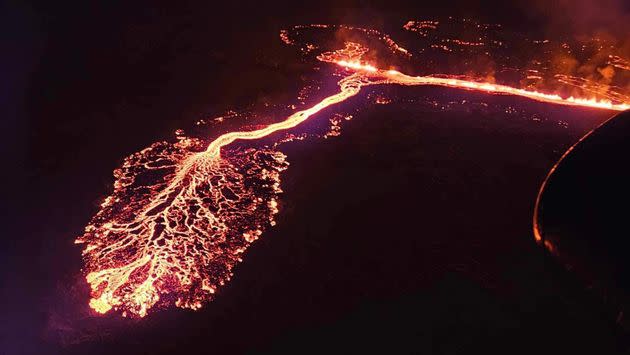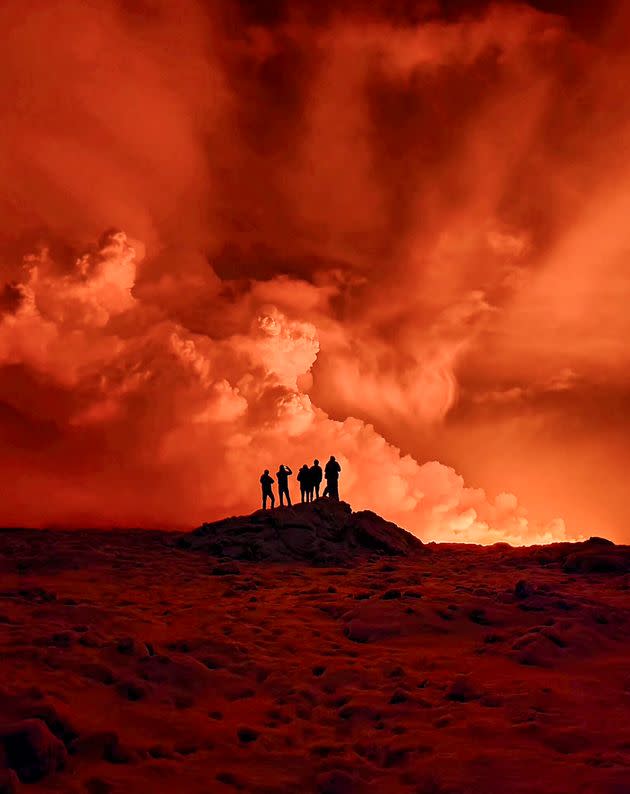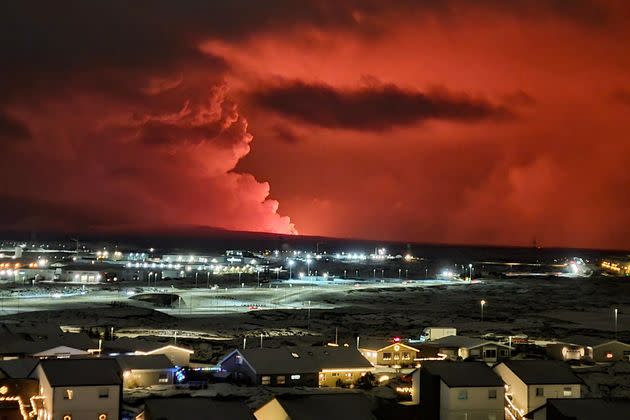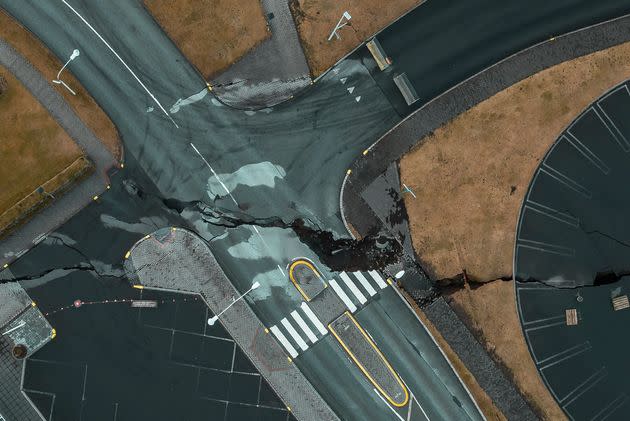Volcano In Iceland Erupts After Triggering Thousands Of Earthquakes
A volcano that’s been triggering tens of thousands of earthquakes near a small village in southwest Iceland finally erupted on Monday after weeks of anticipation, the country’s meteorological office said.
The eruption began just after 10 p.m. local time on the country’s Reykjanes Peninsula, about 2½ miles north of the fishing village of Grandavik. The village evacuated more than 3,000 residents last month under the looming threat of an eruption and as hundreds of earthquakes a day were caused by magma shifting under the Earth’s crust.

A view of lava after volcano eruption located close to Sundhnukagigar, about 4 kilometers northeast of Grindavik town of Reykjanes peninsula, Iceland on Tuesday.
It’s the fourth eruption on the Reykjanes Peninsula in three years, and the largest so far, according to the Icelandic government.
The eruption fissure was roughly 2.5 miles (4 km) long, with “significant ground deformation” seen around the opening, the Icelandic Met Office, Iceland’s national weather service, said in an alert posted to its website Tuesday.
Lava is believed to have discharged from the eruption during the first two hours on a scale of hundreds of cubic meters per second. The eruption’s intensity started to decrease within hours, however, the office said.

Local residents watch smoke billow from a volcanic eruption on the Reykjanes Peninsula on Tuesday.
“The fact that the activity is decreasing already is not an indication of how long the eruption will last, but rather that the eruption is reaching a state of equilibrium,” the Met said.
Morgunblaðið, a daily newspaper in Iceland, is broadcasting a livestream of the spewing magma.
Bjarni Benediktsson, Iceland’s Minister for Foreign Affairs, posted on X — formerly known as Twitter — on Monday night that there have been no flight disruptions either to or from Iceland due to the volcano. International flight corridors also remain open.

Smoke billows from the eruption as seen from the village of Hafnarfjordur on Monday.
In 2010, Iceland’s infamous Eyjafjallajokull volcano caused major disruptions to Europe’s air travel. About 100,000 flights were canceled, and 7 million passengers were affected, according to a 2010 study.
Scientists have said that there is unlikely to be a repeat of such travel disruptions from the Reykjanes Peninsula volcano.
“This type of eruption doesn’t generally produce much ash, which is what tends to ground planes,” Matthew Watson, Professor of Volcanoes and Climate at the University of Bristol, told the BBC.

Cracks are seen at an intersection in the town of Grindavik, which has experienced tens of thousands of earthquakes in recent weeks.
The region (and Iceland overall) is very seismically active, but residents were reportedly shocked when authorities detected underground lava so close to where they live.
“In all scenarios that have been drawn up over the years, the volcano was always supposed to erupt around us, but not in town. We have never felt that our house might not be there,” Bryndis Gunnlaugsdottir, the former head of Grindavick’s city council, told The Washington Post.
The earthquakes have been highly destructive, damaging homes and roads. It remains to be seen what, if any, damage the volcanic eruption brings to the area.
CORRECTION: A previous version of this story stated incorrectly that the volcanic eruption started on Friday. It started on Monday.

